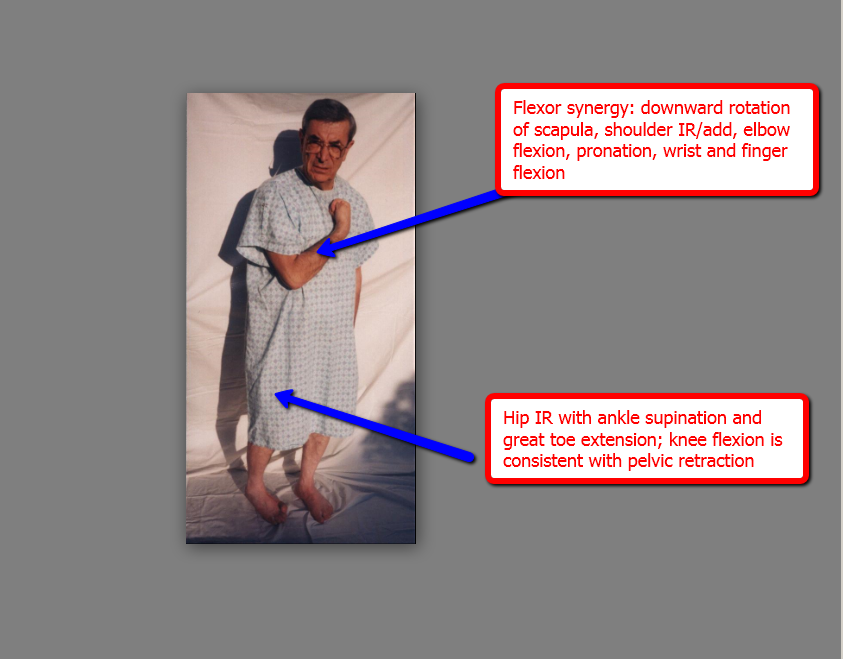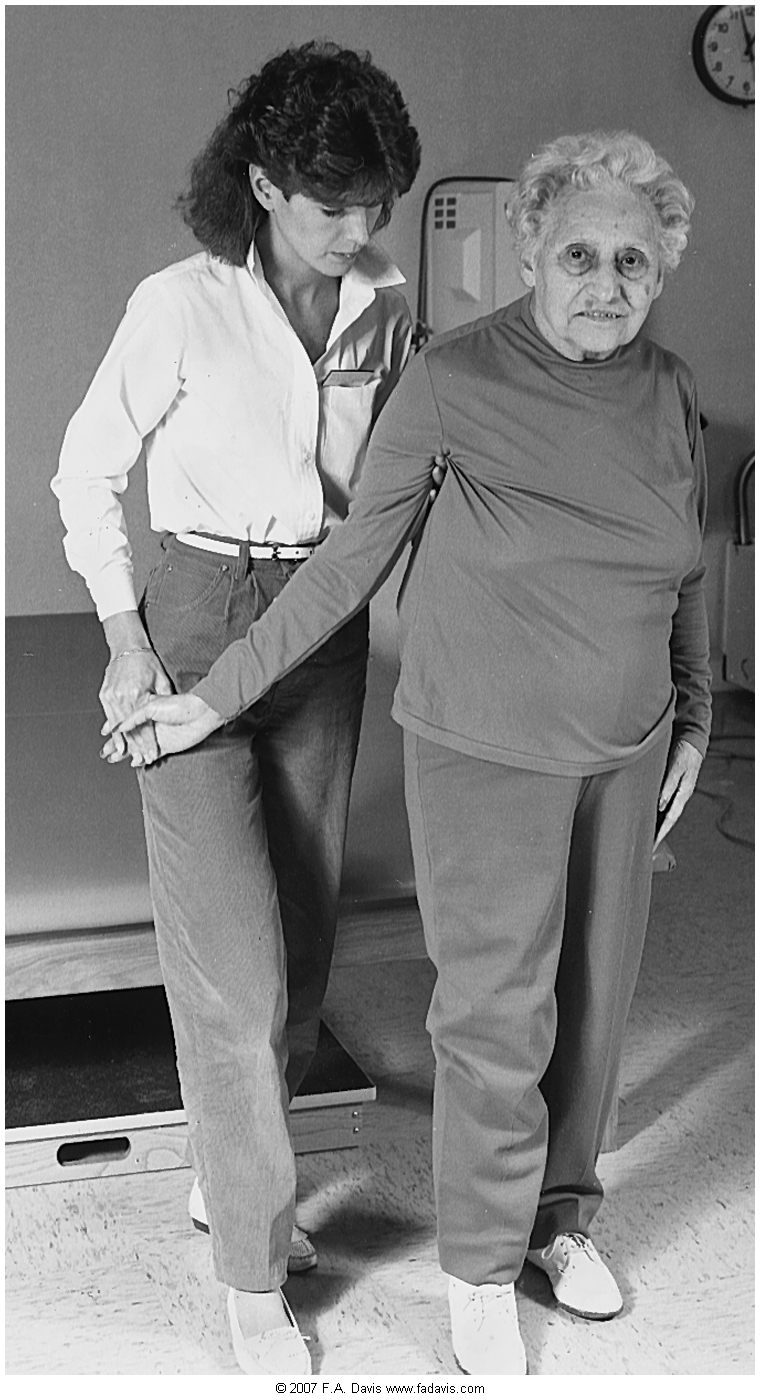Neuromuscular Re-Education Treatment Approaches
Following CVA and TBI, patients experience varying degrees of deficits in central nervous system processes which are necessary for normal movement. The level of motor impairment and potential for functional recovery is evaluated by the physical therapist. A summary of examination processes are included in the Interactive Lecture: Neuromuscular Examination Elements.
Typicall Vs. Atypical Motor Control
|
Prerequisites for Motor Control |
Typical Motor Control Components |
Atypical Motor Control Components |
|
cognition - perception
|
able to:
|
apraxia memory impairments disorientation |
|
range of motion
|
normal alignment of body segments normal length-tension on muscle and connective tissue
|
contractures increased connective tissue formation (stiffening) disuse atrophy |
|
sensation
|
intact, two-way communication between sensory and motor systems
|
somatosensory and kinesthetic deficits slow velocity decreased accuracy |
|
strength |
appropriate effort and force production in a muscle |
reduction of motor units available for activation selective atrophy (decreased fast twitch) reduced firing rate of motor neurons |
|
tone
|
tension between origin and insertion of a muscle
|
hypotonic hypertonic spasticity |
|
synergies |
patterns of contractions which are variable and flexible stabilize body segments during movement produce movement
|
Non-selective movement patterns Stereotypic and predictable movement patterns flexor synergies extensor synergies |
|
adaptability
|
ability to modify motor programs and make predictions/plan based on the environment; integration of
|
Rigid and inflexible responses to initiating/producing movement
|
Example of Synergies Post-Stroke
Techniques to Reduce Spasticity
-
prolonged pressure on long flexor tendons of hand low, oscillating movements, incorporating trunk/limb rotation
-
weight bearing positions: quadruped, kneeling, plantigrade standing
-
sustained stretching in upright postures
-
active contraction of antagonists to spastic muscles
-
electrical stimulation to antagonists
-
ice wraps/packs
-
splinting (positioning, pressurized)
- biofeedback
toc | return to top | previous page | next page





